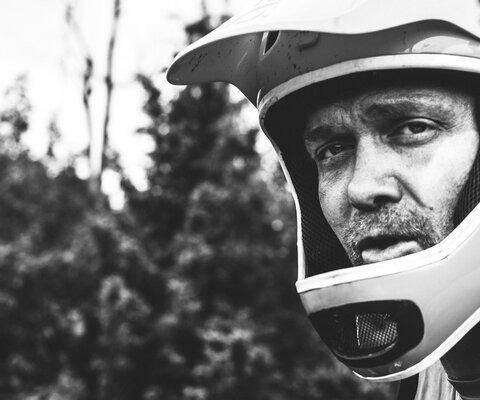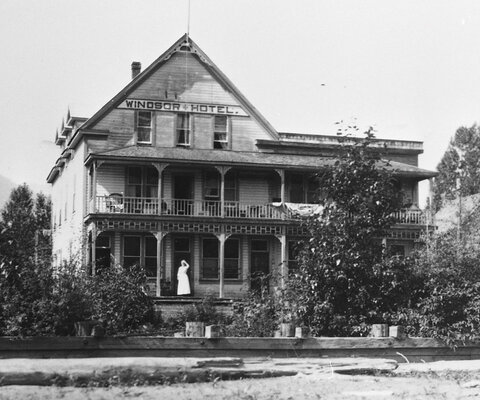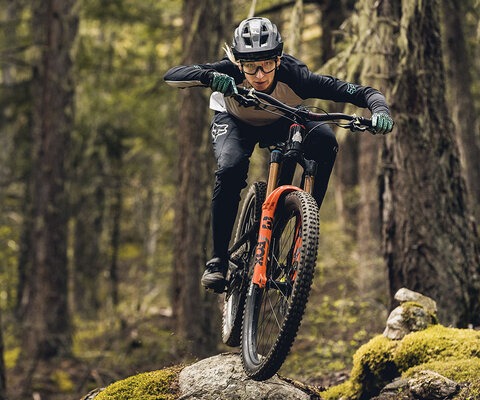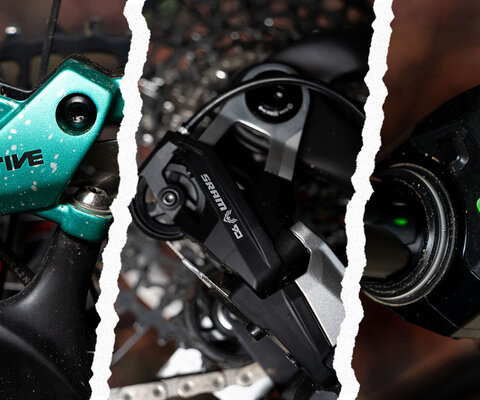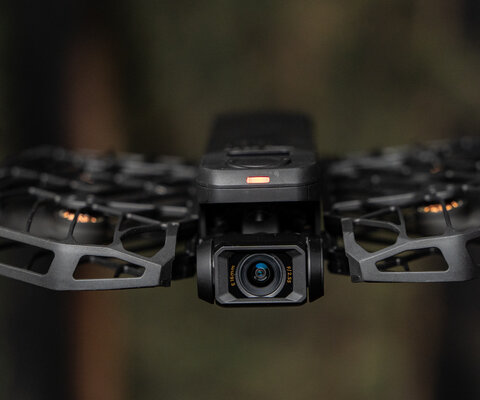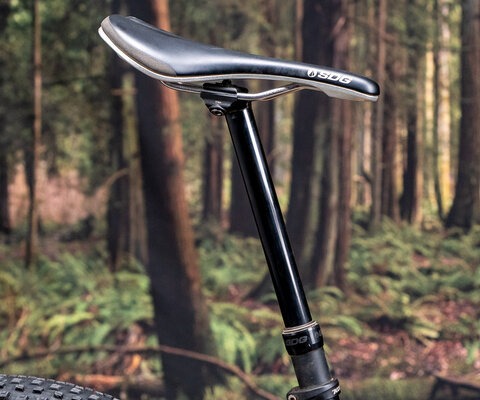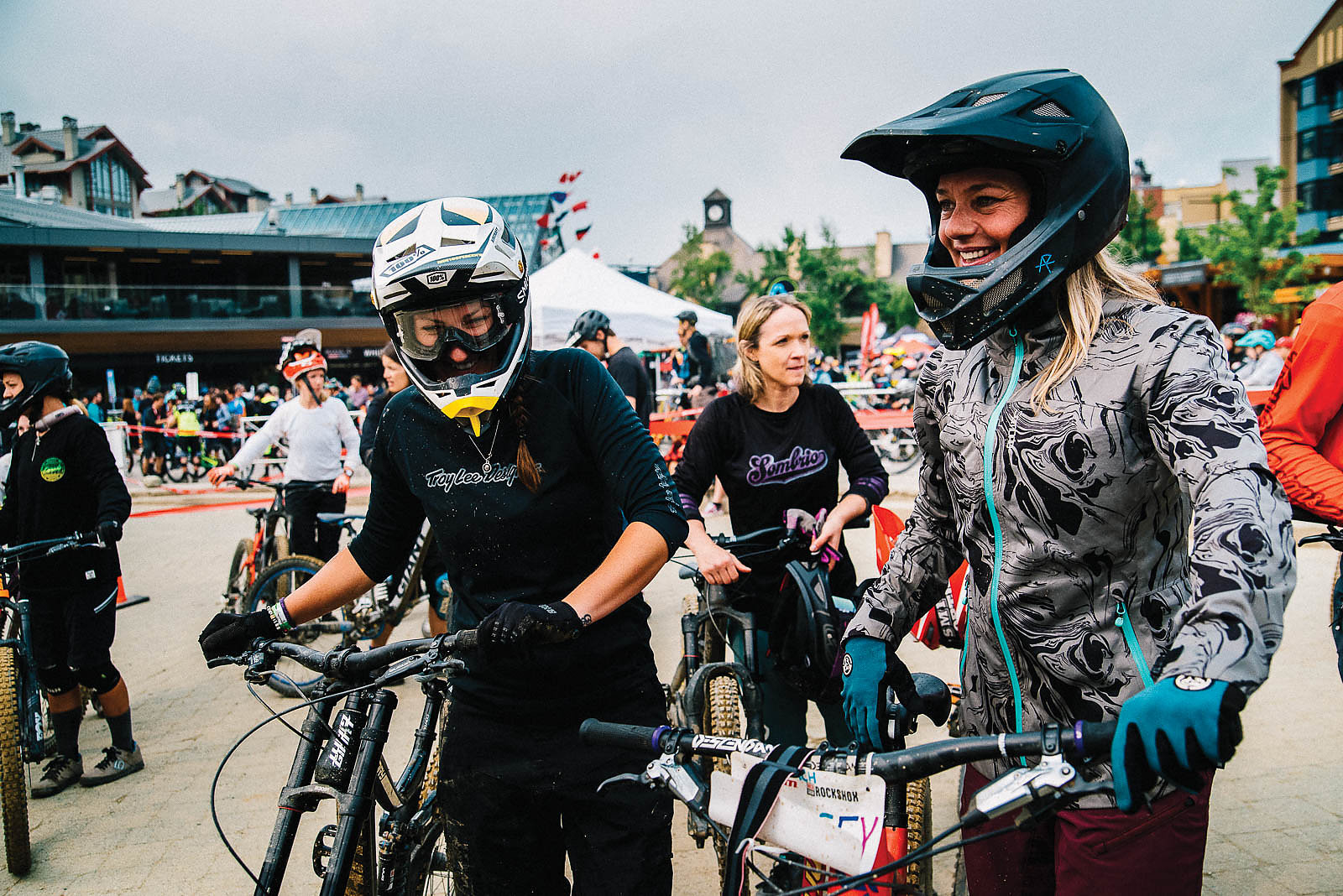
Louder Than Words On the Front Line of Women's Freeride
Words and Photos by Katie Lozancich
The girls next to me are giggling.
Turning to find the source of their elation, I’m greeted by two big grins. Noticing my curiosity, one of the gals, who couldn’t be more than 16 years old, points to the line in front of her. It’s full of women with their mountain bikes, and it snakes out of view. “How could you not be excited looking at this?” she says. I laugh and nod in agreement, sharing her excitement. This is the sixth-annual Liv A-Line Women’s Only Session. The line probably would have been longer too, but Crankworx capped today’s attendees at 150 for safety reasons.
Pedaling toward the entrance of A-line in the mid-August heat, I pass mother-daughter duos, athletes, coaches, groups of friends and solitary riders along the way. Despite the reasons that brought them to Whistler, they’re contributing to a common goal: cultivating sisterhood within mountain biking.
Once given the cue, they fly by, cheering as they go. Finding a break in the commotion, I sneak over to the first drop for a better angle to photograph. That jubilation dissipates with the next group that appears. Instead of gliding over the lip, they dismount and scrutinize the feature. With them is Lindsey Richter, a coach on hand for daunting features like these.
Richter has found that most of her students aren’t incapable of hitting these things. More often than not, the problem is they just don’t know how to approach it. She breaks down the technique and then rounds out the lesson by gracefully hitting it.
Her students follow one by one, each successfully overcoming the obstacle. The hesitation is gone and smiles are all around.
Back in 2007, Crankworx launched WomenzWorx, a multidisciplinary contest that tested female athletes in tech, speed and style. The style component was even held in the legendary Boneyard Slopestyle course, which featured big drops, step-ups, gap drops and wall rides.
“It was different and fun,” Claire Buchar, an original WomenzWorx competitor, says. “Instead of going against the clock, we had the freedom to play around on some slopestyle features, pick our own lines and express our own style, which remains a big part of why I ride.”
Despite participation from herself and other prominent female riders like Lorraine Blancher, Stephanie Nychka and Casey Brown, the event eventually lost steam after its second go in 2009. “I don’t think fans, people in the industry, and Crankworx knew what to make of it quite yet,” Buchar says. The timing wasn’t quite right, but its absence only amplified a long-standing dilemma: For many women, the festival just felt inaccessible. This problem wasn’t exclusive to Crankworx; mountain biking as a whole has been underrepresented by women since its inception.

“I started biking in the Whistler bike park in 2005 back when there were only about 15 local females that rode—a lot of these women still live in the area and are strong staples in the bike scene,” says Amalie Pasternak, the mastermind behind the women’s A-Line event. She remembers having to wear ill-fitting men’s clothes and pads during those early days since most brands didn’t cater to women.
But Crankworx has never sought to be like the rest of the industry—simply look at its festival format. It brings together mountain bikers across disciplines, creatives, brands, and the everyday person to celebrate the joy of riding bikes.
If accessibility was truly their goal, they needed to think beyond the race tape. Capitalizing on a smaller but more successful event that also launched in 2009, Wednesday Women’s Nights, they decided to do something bold within the industry. In 2014, they shut down the iconic A-Line for an afternoon, just for the ladies. It’s been so well received that registration fills almost instantly
every year.
The Rotorua leg of the tour has even brought the event to New Zealand, where it is received with equal enthusiasm. Crankworx didn’t stop there, though. Also in 2013, with SRAM’s assistance, they introduced free riding and technical clinics for ladies eager to expand their skills. As well, they highlighted its many female heroes by integrating athlete signings and panel discussions throughout each stop of the tour.
Their boldest change, however, was implemented in 2015. Realizing the parity they were striving for couldn’t be achieved with a single event, Crankworx decided to set a precedent. Having showcased some of the finest female riders in biking since the beginning, it was now time to also support them. To do this, they made the prize payout for men and women equal in every event.
“As soon as the announcement came out, that’s where I focused my energy because you spend a lot of money on racing and there’s really not a huge return,” says Jill Kintner, a three-time Queen of Crankworx. With the high costs of competing, it’s challenging to earn a lucrative living within this industry, especially as a woman when sponsorships are not as diverse. Providing equal payouts makes competing within a tour a no-brainer and a viable option financially for a career. “It’s the fairest series I’ve ever been a part of,” Kintner says.
That mentality was also applied to podiums. Female and male champions, who used to be awarded separately, now stand side by side, sending a message that speaks louder than words. “The message we were trying to send was, women and men, should be treated equally in mountain biking,” says Julia Montague, Crankworx’s communications director.
Yet, despite the growing presence of women throughout the festival, one aspect still went unaddressed: freestyle events. The festival’s most celebrated event, Red Bull Joyride, has notoriously had no female-focused equivalent—that was until a few days after the women’s A-Line event, at Crankworx’s first-ever Riverside Women’s Jump Jam.
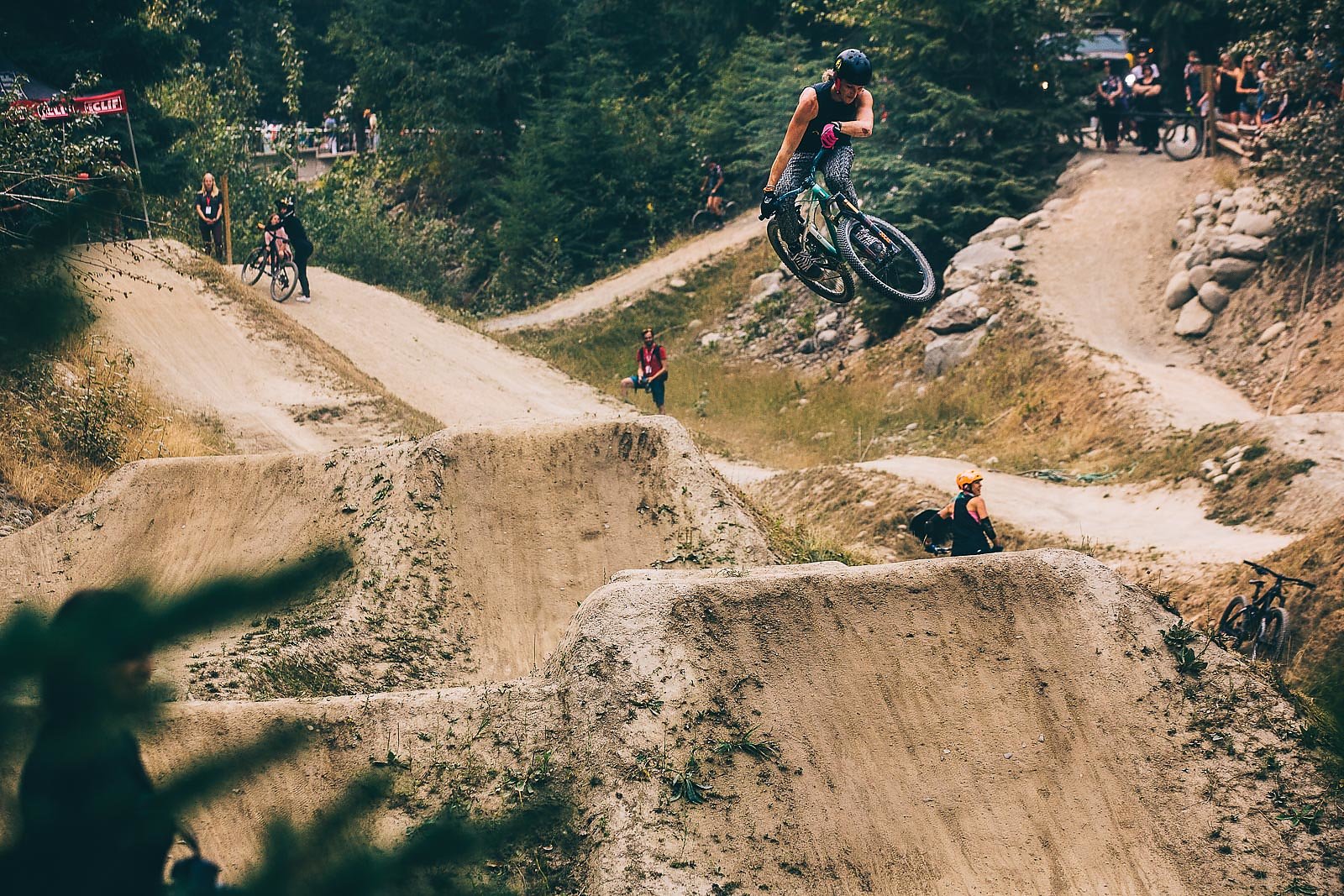
Standing on top of the starting mound, I’m immersed in silence. The crowd hasn’t filled in yet on the sidelines, and the 15 female competitors surrounding me are quietly scrutinizing the venue. They’ll have the option to hit any of the lines that lay before them while being judged on style, speed and amplitude. This whole event was spearheaded by Lisa Mason, founder of the Women’s Freeride Movement, a group that aims to support and celebrate female freeriding. Having seen women send backflips and 360 spins, she’s been hounding Crankworx officials for years to expand past the whip off, which was the only freestyle event offered to women until 2018.
“On a day like Red Bull Joyride, arguably one of the biggest mountain biking events in the world, to showcase our women who are pushing the limits of style, alongside the men, hopefully, sends a message and sets a direction for where things are headed,” Montague says. “In terms of a women’s slopestyle event, the sky’s the limit.”
After a few deep breaths, the first few riders push off. The competition today is diverse. It ranges from original WomenzWorx rider Stephanie Nychka, to former downhill racer and World Cup Champion Manon Carpenter, to Olympian and BMX World Cup Champion Caroline Buchanan.
Feeling the jumps out, everyone rides conservatively at first. But that apprehension is like morning frost. Given some time to warm up, it evaporates and is replaced by confidence.
As they push themselves, it’s like a domino effect on the rest of the competitors. Some of the girls return to the starting mound covered in dirt after hitting the ground hard. Falling isn’t a deterrent for them. They’re brushing themselves off and starting again. Watching Buchanan go bigger and bigger, it’s clear these crashes are not creeping into her psyche. Instead, she only gets more daring by teasing her hands from the handlebars. That eggs on Nychka, who’s keeping pace with her.
Finally, time is up and the judges start evaluating, but the competitors don’t seem to care. They keep jumping. Even when Buchanan has been crowned the winner, she’s still going after it. It’s not until she attempts her boldest trick yet that her ambitions become clear. Throwing both of her hands from the handlebar, she goes for her first-ever tuck no-hander.
Extending her arms gracefully for a second, she reconnects with her bicycle and lands. The crowd loses
it. Taking a second to bask in the moment, Buchanan is beaming from head to toe.
“I like this environment because I think the best way to progress women’s sports is to have other women to challenge you,” Buchanan says as she’s walking her bike. On our way toward the starting mound, we pass a bustling crowd in which many young girls are perched on the railing watching. “As soon as one does it, it gives you the confidence to go out and try it,” she says. Because in the end, progression really comes back to one simple notion: If she can do it, I can do it.
